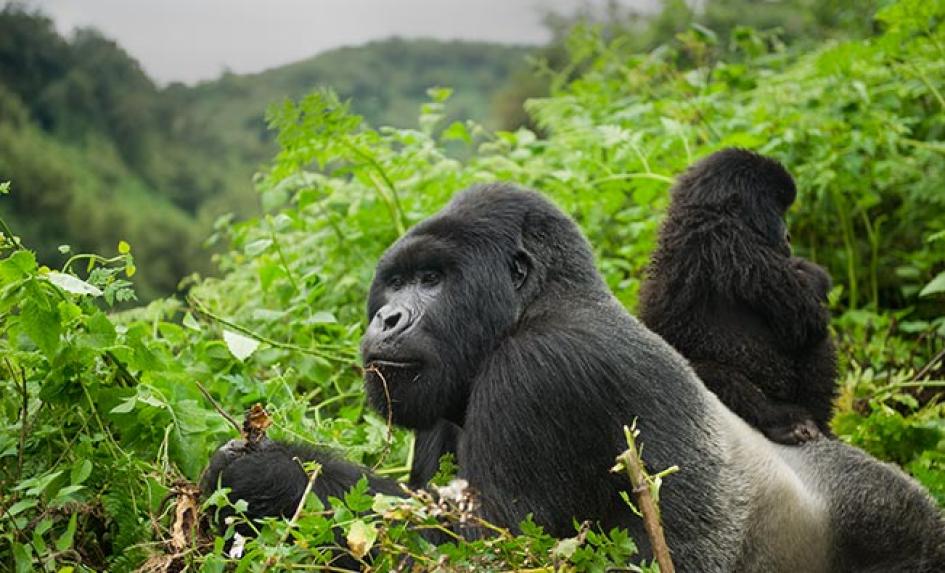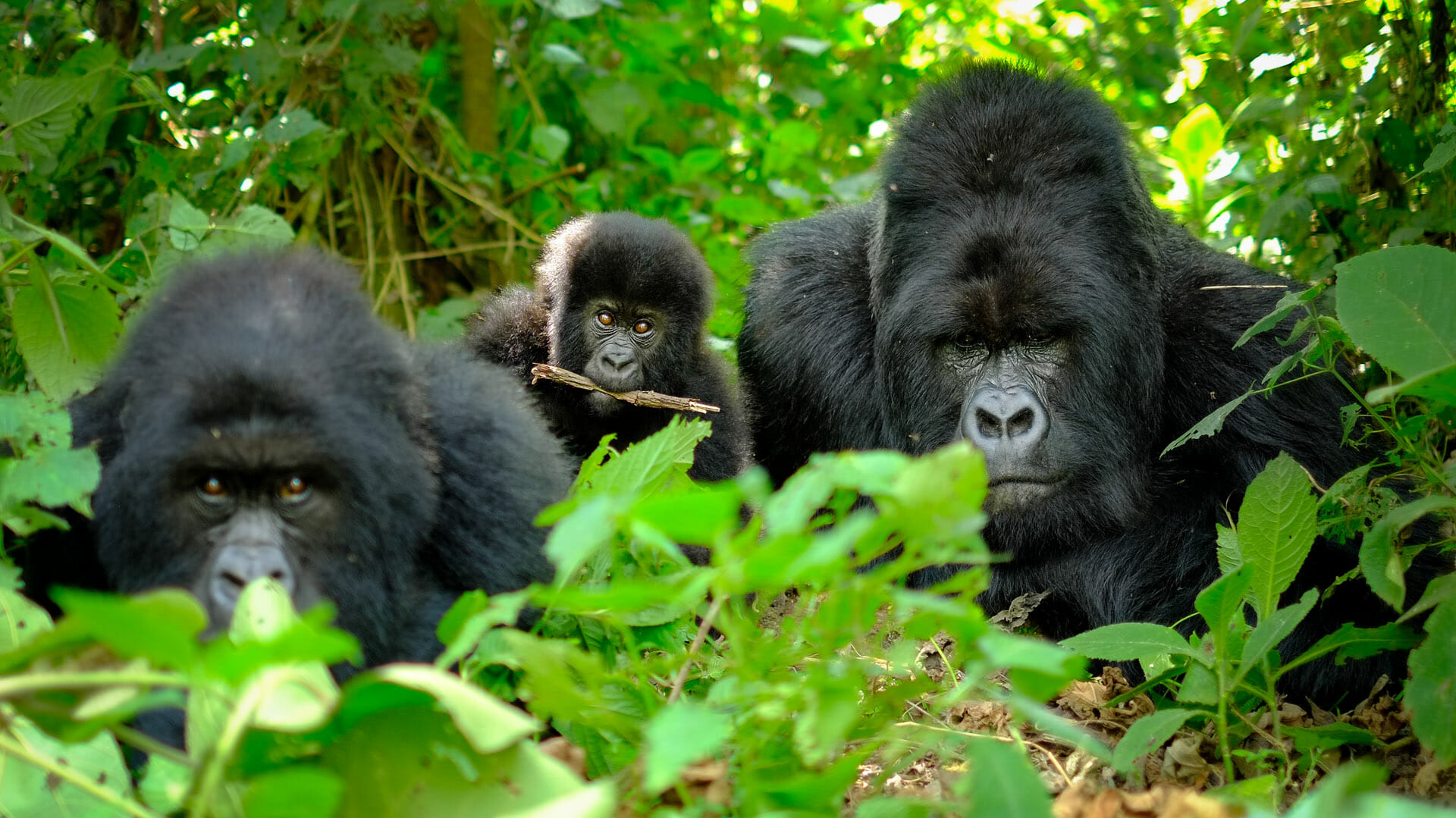Gorilla Trekking and Accessibility. Can People with Disabilities go on a Gorilla Trekking safari? Gorilla trekking is a remarkable adventure that allows travelers to come face-to-face with the majestic mountain gorillas in their natural habitat. It is an experience that is often perceived as physically demanding and challenging, raising the question of whether people with disabilities can partake in this incredible activity. In this comprehensive essay, we will explore the accessibility of gorilla trekking for individuals with disabilities, considering various factors and highlighting the efforts made to accommodate diverse needs.

Understanding Gorilla Trekking
Gorilla trekking in East Africa primarily takes place in two countries: Uganda and Rwanda. Both countries are home to populations of endangered mountain gorillas and offer unique opportunities to observe these incredible creatures in their natural habitats.
Gorilla trekking in Uganda
In Uganda, gorilla trekking is conducted in Bwindi Impenetrable National Park and Mgahinga Gorilla National Park. Bwindi Impenetrable National Park, located in the southwestern part of the country, is renowned for its dense forests and is home to almost half of the world’s remaining mountain gorilla population. Mgahinga Gorilla National Park, situated in the Virunga Mountains, is part of the larger Virunga Conservation Area, which spans across Uganda, Rwanda, and the Democratic Republic of Congo.
Check out our popular gorilla safaris in Uganda:
Gorilla trekking in Rwanda
In Rwanda, gorilla trekking takes place in Volcanoes National Park, located in the Virunga Mountains. This park is famous for its significant population of mountain gorillas and also is known for being the place where renowned primatologist Dian Fossey conducted her research on gorillas.
Both countries offer a unique and unforgettable gorilla trekking experience, allowing visitors to observe these incredible creatures in their natural habitats while contributing to their conservation. The trekking activities are carefully regulated to ensure the safety and well-being of both the gorillas and the visitors, with permits required to participate in the treks.
It’s worth noting that the specific locations for gorilla trekking within the parks may vary based on the movement and habitat preferences of the gorilla groups. Trained guides and rangers lead the treks, guiding visitors through the forests and ensuring a safe and informative experience.
Popular gorilla trekking safaris in Rwanda include:

A unique and immersive wildlife experience
Gorilla trekking in East Africa provides an extraordinary opportunity to witness the beauty, behavior, and conservation efforts surrounding the endangered mountain gorillas. It is a truly unique and immersive wildlife experience that continues to inspire and connect people with these magnificent creatures.
Gorilla trekking involves hiking through dense forests, navigating uneven terrain, and sometimes encountering steep slopes. The primary goal is to locate a gorilla family and spend a designated time observing their behavior from a safe distance. The activity requires a moderate level of fitness and mobility due to the physical demands of trekking in a wilderness environment. However, it is essential to note that the accessibility of gorilla trekking depends on the specific disability and the individual’s physical capabilities.
Challenges and Limitations
While gorilla trekking can be physically demanding, individuals with certain disabilities can still participate, thanks to accommodations and assistance provided by tour operators and national park authorities. However, it is important to acknowledge that there may be limitations based on the nature and severity of the disability, as well as the safety considerations for both the visitors and the gorillas.
Physical Disabilities
For individuals with physical disabilities, such as limited mobility or use of a wheelchair, there are certain challenges to consider. The rugged terrain and dense vegetation of gorilla habitats may pose obstacles for wheelchair users. However, some tour operators and national parks have implemented measures to enhance accessibility. They may provide specialized equipment, such as all-terrain wheelchairs or stretchers, to facilitate the transport of individuals with mobility challenges. Additionally, experienced guides and porters are available to assist and ensure a safe and enjoyable experience for all participants.
Visual Impairments
Individuals with visual impairments may face challenges in fully experiencing gorilla trekking, as visual observation plays a significant role in this activity. However, with the assistance of trained guides and additional descriptive narration, visitors with visual impairments can still engage in the trek and appreciate the sounds, smells, and tactile experiences of the natural environment. It is crucial for us to provide detailed information about the trek and the gorillas to compensate for the visual limitations of participants.
Hearing Impairments
Gorilla trekking heavily relies on auditory cues, such as vocalizations and communication among gorillas. For individuals with hearing impairments, Pamoja Tours and Travel can offer sign language interpreters or written materials to ensure effective communication. This enables participants to have a comprehensive understanding of the gorillas’ behavior and the significance of their surroundings.
Intellectual and Developmental Disabilities
Individuals with intellectual or developmental disabilities may require additional support and accommodations during gorilla trekking. It is crucial for us to offer clear and concise instructions, along with patient and understanding guides who can adapt their communication style to meet the needs of each participant. Flexibility in pacing and breaks can also be provided to ensure everyone can comfortably participate in the trek.

Efforts to Improve Accessibility
Many tour operators and national park authorities in gorilla trekking destinations have recognized the importance of inclusivity and are taking proactive steps to enhance accessibility. Therefore Pamoja Tours and Travel is working closely with disability organizations, experts, and local communities to develop strategies and infrastructure that enable individuals with disabilities to participate in this extraordinary adventure. These efforts include improving trails, constructing accessible viewing platforms, and training guides on disability awareness and inclusive practices.
The Role of Responsible Tourism
Responsible tourism plays a vital role in ensuring accessibility and inclusivity in gorilla trekking. By supporting tour operators and national parks that prioritize accessibility initiatives, travelers can contribute to the development and maintenance of inclusive infrastructure. It is essential to research and choose reputable tour operators who have a demonstrated commitment to inclusive tourism practices.
Conclusion
Gorilla trekking is a life-changing experience that should be accessible to all individuals, regardless of disabilities. While there are challenges and limitations, efforts are in place to accommodate diverse needs and provide inclusive experiences. Pamoja Tours and Travel can continue to improve accessibility. Also, ensure that everyone has the opportunity to witness the beauty and also wonders of gorilla trekking. This is by fostering collaboration between disability organizations. Also, national park authorities, and the wider tourism industry, With dedication, innovation, and a commitment to inclusivity, the magic of gorilla trekking can be shared with people of all abilities.







